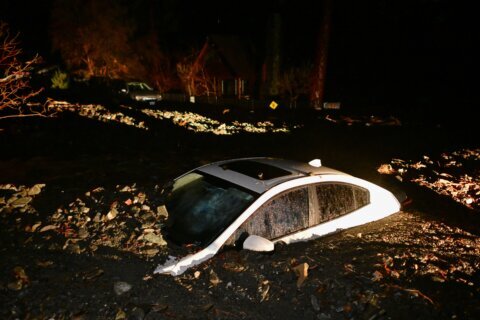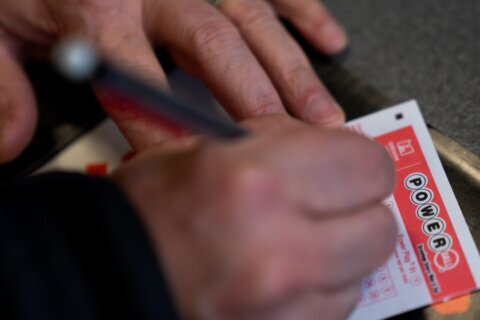NEW ORLEANS (AP) — Mandatory evacuations were ordered southeast of New Orleans on Thursday as the city and a surrounding stretch of the Gulf Coast braced for a possible hurricane over the weekend that could unload heavy rain and send water spilling over levees.
All eyes were on a weather disturbance in the Gulf of Mexico that dumped as much as 8 inches (20 centimeters) in just three hours Wednesday over parts of metro New Orleans, triggering flash flooding.
It was expected to turn into a tropical storm named Barry on Thursday and, possibly, the first hurricane of the season by Friday, coming ashore along the Louisiana-Mississippi-Texas coastline and pouring more water into the already swollen Mississippi River.
Forecasters said the biggest danger in the days to come is not destructive winds but heavy rain as the slow-moving storm makes its way up the Mississippi Valley.
Louisiana Gov. John Bel Edwards declared an emergency and said National Guard troops and high-water vehicles will be positioned all over the state.
“The entire coast of Louisiana is at play in this storm,” he warned.
New Orleans officials asked people to keep at least three days of supplies on hand and to keep their neighborhood storm drains clear so water can move quickly.
A spokesman for the Army Corps of Engineers in New Orleans said the agency is not expecting widespread overtopping of the levees, but there are concerns for areas south of the city. Mandatory evacuations were ordered for people living near the Mississippi River in Plaquemines Parish, at Louisiana’s southeastern tip.
Plaquemines Parish made sandbags available to people in areas not under evacuations orders, as did several other communities in Louisiana and Mississippi.
The National Weather Service expects the river to rise to 20 feet (6 meters) by Saturday morning at a key gauge in the New Orleans area, which is protected by levees 20 to 25 feet (6 to 7.6 meters) high.
“We’re confident the levees themselves are in good shape. The big focus is height,” Corps spokesman Ricky Boyett said.
Forecasters said Louisiana could see up to 12 inches (30 centimeters) of rain by Monday, with isolated areas receiving as much as 18 inches (46 centimeters).
And the storm’s surge at the mouth of the Mississippi could also mean a river that’s been running high for months will rise even higher.
New Orleans got an early taste Wednesday of what may be in store. Floodwaters invaded downtown hotels and businesses and turned streets into rivers, paralyzing rush-hour traffic and stalling cars. Some people paddled their way around in kayaks.
It all happened fast.
“I must have got to work about a quarter to 7,” said Donald Smith, who saw his restaurant on Basin Street flood for the third time this year. “By 7:15, water was everywhere.”
The city’s Sewerage and Water Board said the pumping system that drains the streets was at full capacity. But the immense amount of rain in three hours would overwhelm any system, said agency director Ghassan Korban.
As the water from Wednesday morning’s storms receded, people worried about what might come next.
Tanya Gulliver-Garcia was trying to make her way home during the deluge. Flooded streets turned a 15-minute drive into an ordeal lasting more than two hours.
“This is going to be a slow storm,” she said. “That’s what I’m concerned about.”
Tourists Floyd and Missy Martin of Raleigh, North Carolina, were trying to make the best of it at a store with puddles on the floor where they were buying an umbrella, chips and peanuts, and two bottles of red wine.
“We could drown out our sorrows or make an adventure of it,” Floyd Martin joked.
___
Associated Press reporters Chevel Johnson and Janet McConnaughey contributed to this report.
Copyright © 2025 The Associated Press. All rights reserved. This material may not be published, broadcast, written or redistributed.







